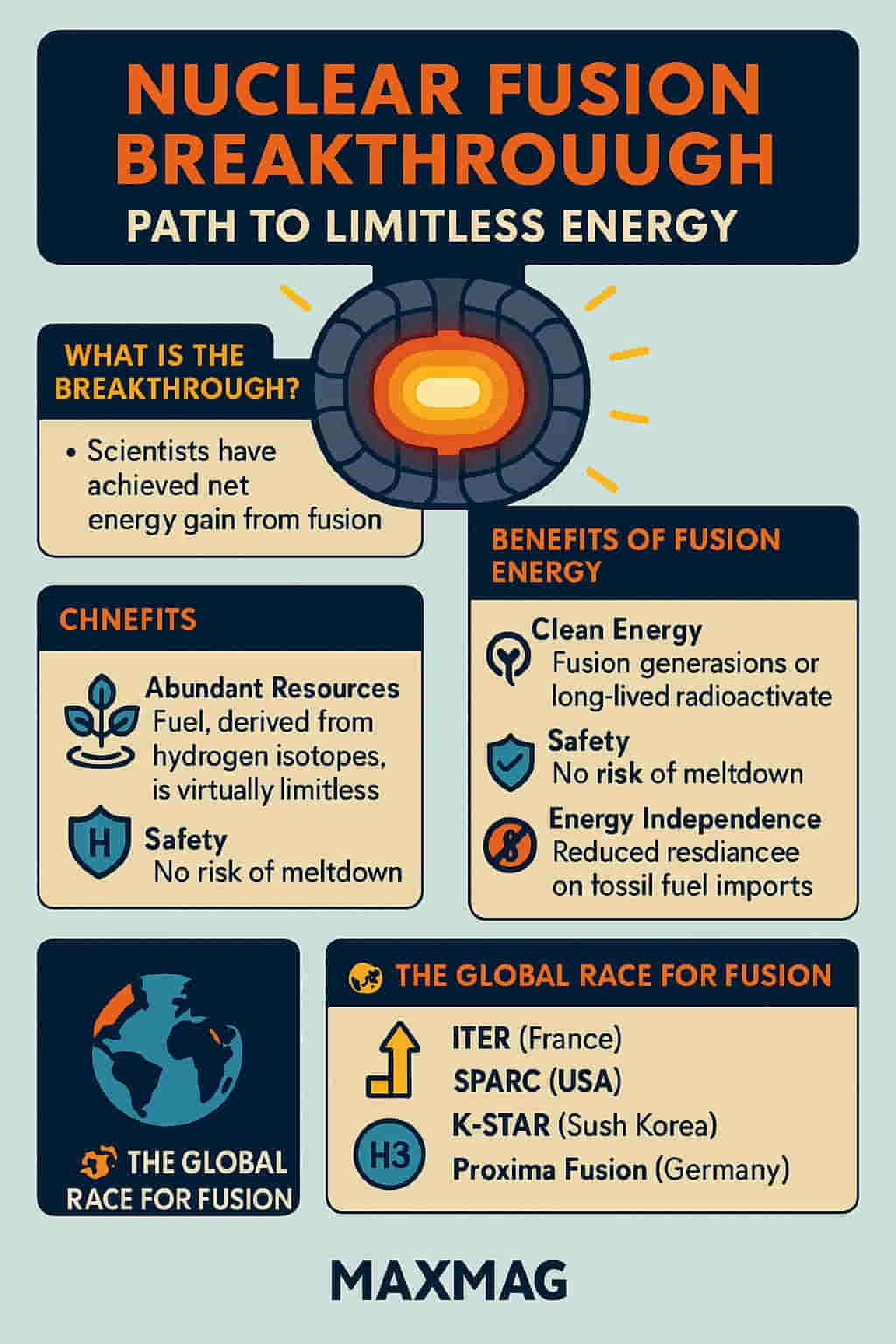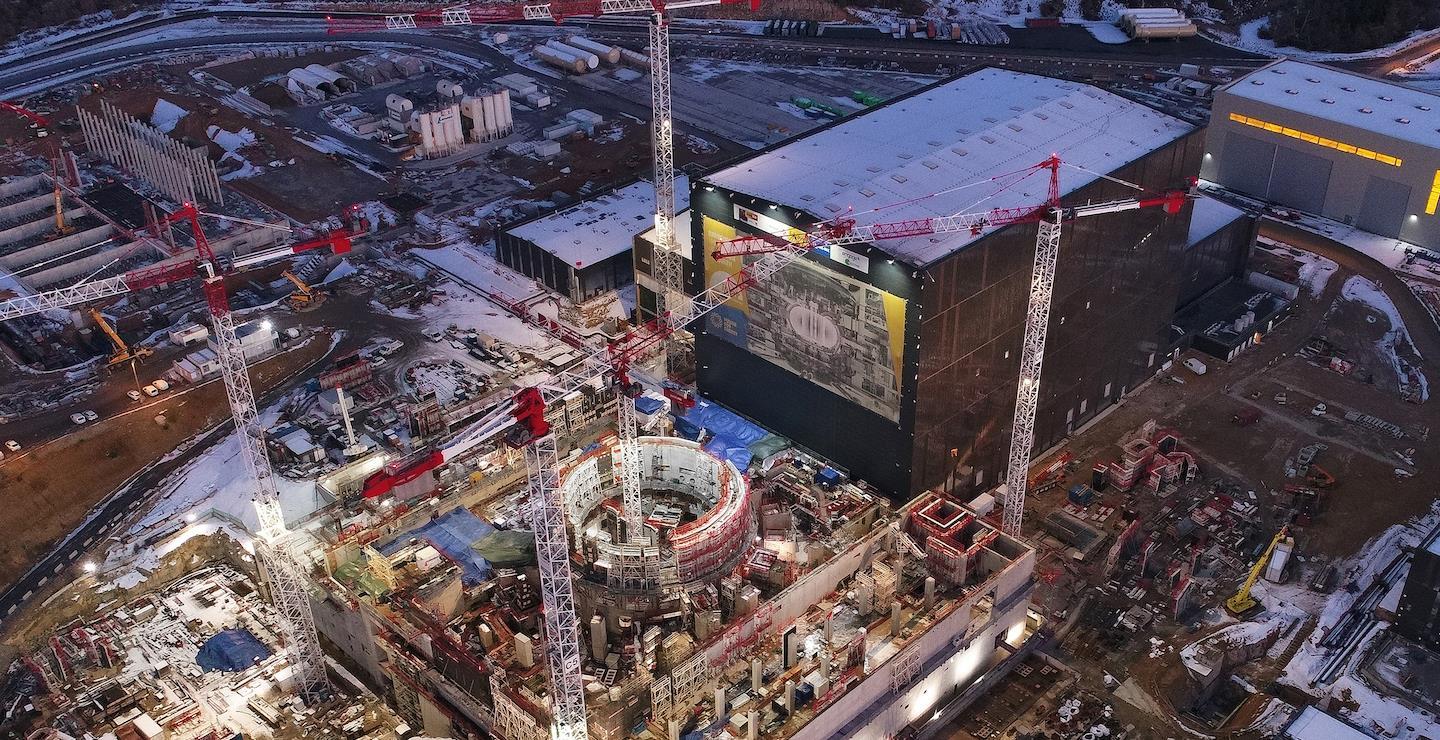
For decades, the dream of generating virtually unlimited clean energy through nuclear fusion has been one of science’s most ambitious goals. Today, thanks to remarkable progress in experimental physics and engineering, a major nuclear fusion breakthrough signals that this vision may soon become a reality.
Scientists have made strides in replicating the process that powers our sun—fusing light atomic nuclei to release tremendous energy. This leap forward may lead us into an age where fossil fuels are no longer necessary, and clean, safe, and inexhaustible power is accessible to all.
A New Era for Fusion Energy
Unlike nuclear fission, which splits atoms and leaves behind radioactive waste, nuclear fusion works by combining hydrogen isotopes—typically deuterium and tritium—at extremely high temperatures. The process releases massive amounts of energy, but achieving the right conditions on Earth has always posed a monumental challenge.
The recent nuclear fusion breakthrough involves achieving net energy gain—a moment when the energy produced by fusion reactions exceeds the energy required to ignite them. This result, previously elusive, has now been demonstrated in controlled settings, sparking hope in the global scientific community.
How the Nuclear Fusion Breakthrough Was Achieved
The breakthrough centers around two main advancements: precision in magnetic plasma confinement and improvements in ultra-powerful laser ignition systems. By containing the superheated plasma more efficiently and sustaining it for longer periods, researchers have reached new levels of stability.
In the United States, major laboratories have used lasers the size of warehouses to compress hydrogen fuel pellets and trigger fusion. Meanwhile, magnetic confinement facilities in Europe and Asia have enhanced reactor walls with special materials that withstand extreme conditions, allowing the reaction to continue without structural damage.
These efforts together have led to a nuclear fusion breakthrough that marks a key turning point in fusion research.
Benefits of the Nuclear Fusion Breakthrough
This advancement carries profound implications across environmental, economic, and technological domains:
-
Clean Energy: Fusion does not produce harmful emissions or long-lived radioactive waste. It is an inherently clean energy source.
-
Abundant Resources: Hydrogen is one of the most common elements in the universe, making fusion fuel virtually limitless.
-
Safety: Unlike fission, fusion doesn’t carry the risk of meltdown. If something goes wrong, the reaction stops.
-
Energy Independence: Countries that develop fusion reactors could drastically reduce their dependence on fossil fuel imports.
Trusted institutions such as the U.S. Department of Energy highlight fusion’s potential role in decarbonizing the global economy and accelerating the transition to renewable energy.
Challenges That Remain
While the nuclear fusion breakthrough is significant, commercial fusion energy is not yet around the corner. Several hurdles remain:
-
Scaling Up: Most successful tests have occurred in tightly controlled laboratory environments. Scaling these technologies into full-size, grid-connected power plants will require years of further development.
-
Cost: Fusion reactors are complex and expensive to build. Innovations in materials science and superconductors are helping, but affordability is still a major barrier.
-
Fuel Handling: Tritium, a key fuel in fusion reactions, is rare and must be carefully handled due to its radioactivity.
Despite these challenges, governments and private companies alike are investing heavily in the next generation of reactors, believing the payoff could be immense.
🌍 The Global Race for Fusion
Nations around the world are racing to harness fusion power. Here are some of the major players:
-
ITER (France): A multinational collaboration building the world’s largest tokamak reactor, aiming to prove net energy gain at industrial scale.
-
SPARC (USA): A compact fusion reactor under development by MIT and Commonwealth Fusion Systems, expected to demonstrate net positive output by 2027.
-
K-STAR (South Korea): Known as the “artificial sun,” it has maintained record-setting plasma durations.
-
Proxima Fusion (Germany): Focused on stellarator technology, it promises longer and more stable fusion reactions.
Private sector involvement is also booming. Companies like TAE Technologies and Helion Energy have raised billions to develop compact, commercially viable fusion systems. According to Fusion Industry Association, over 40 private fusion firms are active globally, showing confidence in this transformative technology.
Inside the Nuclear Fusion Breakthrough
Let’s take a closer look at what made this nuclear fusion breakthrough possible:
-
Extreme Temperatures: Fusion reactions require temperatures above 100 million degrees Celsius—hotter than the sun’s core. Achieving and maintaining this has been one of fusion’s biggest technical barriers.
-
Advanced Materials: New alloys and ceramics are being developed to withstand the brutal conditions inside fusion reactors, enabling longer operation times.
-
Superconducting Magnets: These are critical in shaping and confining the plasma. Recent breakthroughs in high-temperature superconductors are reducing energy losses and improving efficiency.
-
Machine Learning Integration: AI and machine learning tools are helping researchers predict plasma behavior and optimize conditions in real time.
Each of these elements contributes to creating stable fusion reactions, something that just a decade ago seemed out of reach.
Economic and Environmental Impact
When commercialized, fusion energy could disrupt global energy markets. It would reduce reliance on oil, coal, and natural gas, decrease energy costs over time, and create entirely new industrial sectors focused on fusion technology.
Environmentally, the reduction in greenhouse gas emissions would be dramatic. Unlike solar or wind, fusion doesn’t depend on weather, making it a reliable backbone for clean energy grids.
Moreover, fusion energy would promote energy equity by providing a scalable solution for countries without access to traditional power infrastructure.
Looking Ahead: What Comes Next?
Scientists are cautiously optimistic. While timelines vary, many believe we could see the first fusion power plants by the mid-2030s. Several pilot reactors are already in development.
Continued public investment and international collaboration are vital to sustaining progress. The fusion community must also work on regulatory frameworks, safety standards, and grid integration strategies.
This recent nuclear fusion breakthrough is not just a scientific feat—it’s a signal that humanity might soon wield the same force that powers the stars.
FAQ: Nuclear Fusion Breakthrough
Q1: What is nuclear fusion, and how does it work?
Nuclear fusion involves combining two light atomic nuclei—usually forms of hydrogen—into a heavier nucleus, releasing vast energy. It’s the same process that powers stars.
Q2: What is the recent nuclear fusion breakthrough about?
Scientists achieved net energy gain, meaning the fusion reaction produced more energy than it took to start it—something previously never done in a lab.
Q3: Is nuclear fusion safe?
Yes. Fusion doesn’t involve chain reactions or long-lived radioactive waste. If the system fails, the reaction simply stops.
Q4: When will fusion power be available commercially?
Experts estimate fusion power could reach the commercial stage between 2035 and 2045, depending on funding and technological progress.
Q5: How is fusion different from nuclear fission?
Fission splits atoms and creates radioactive waste. Fusion merges atoms, producing less waste and much more energy with minimal risk.





